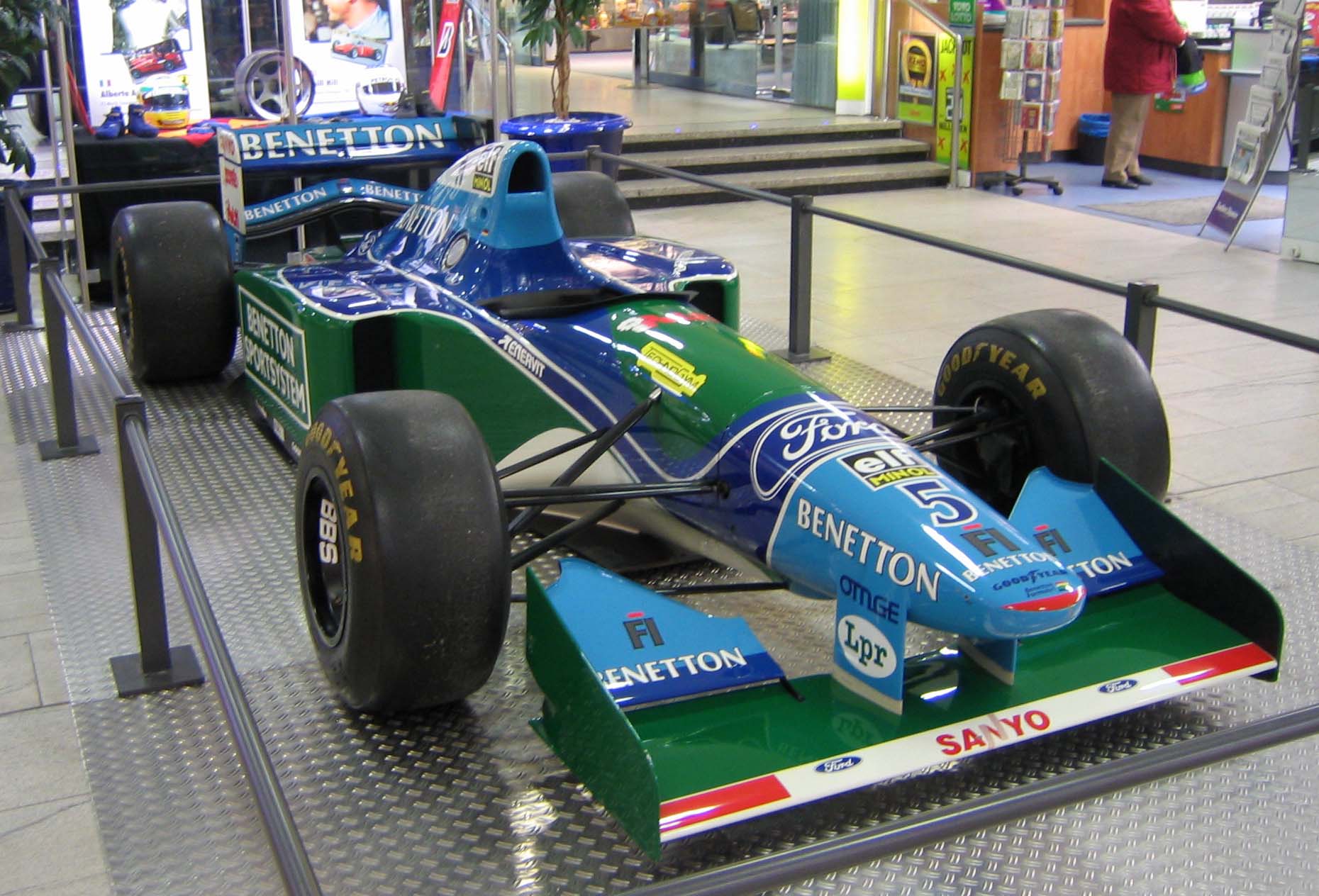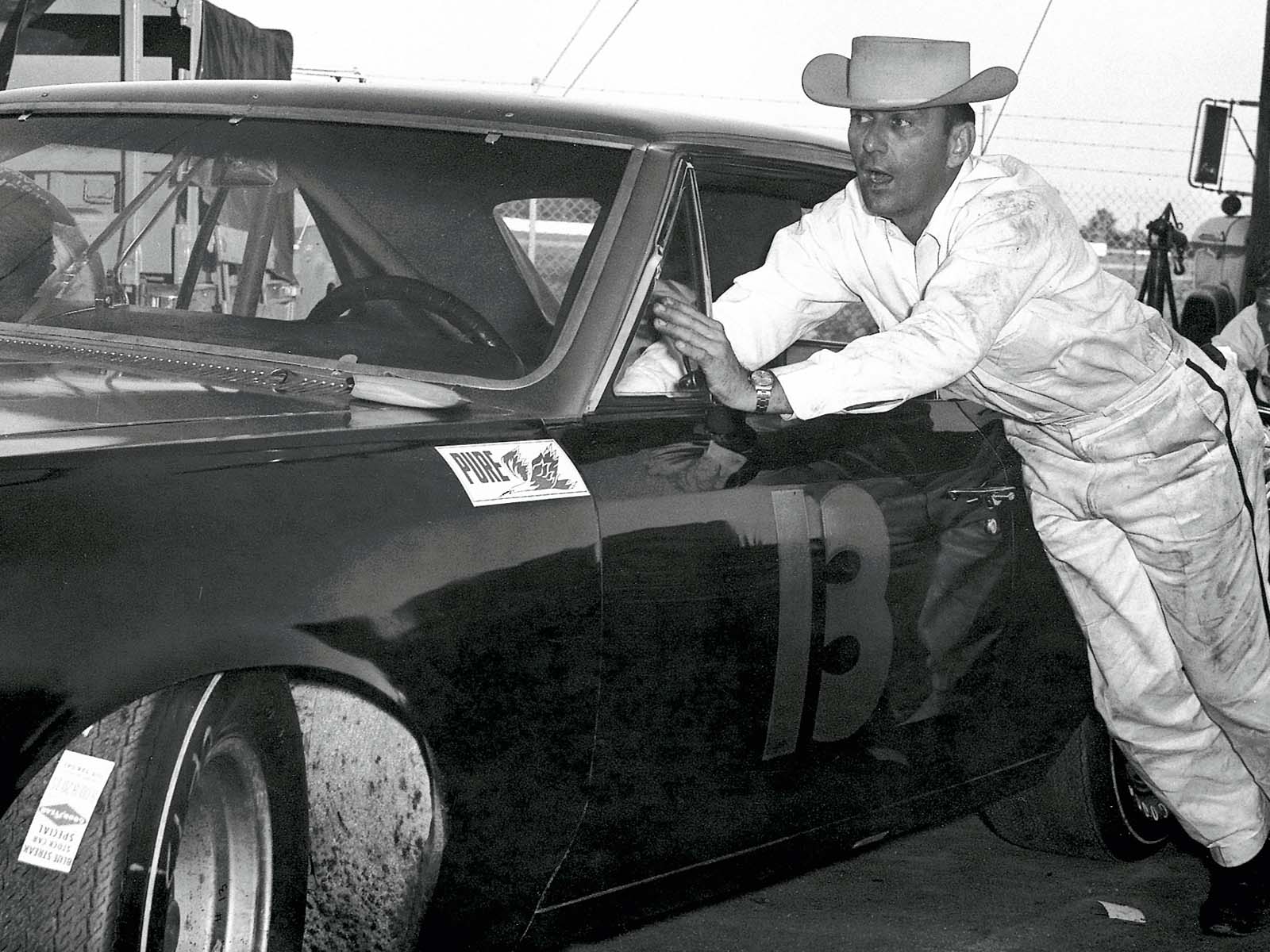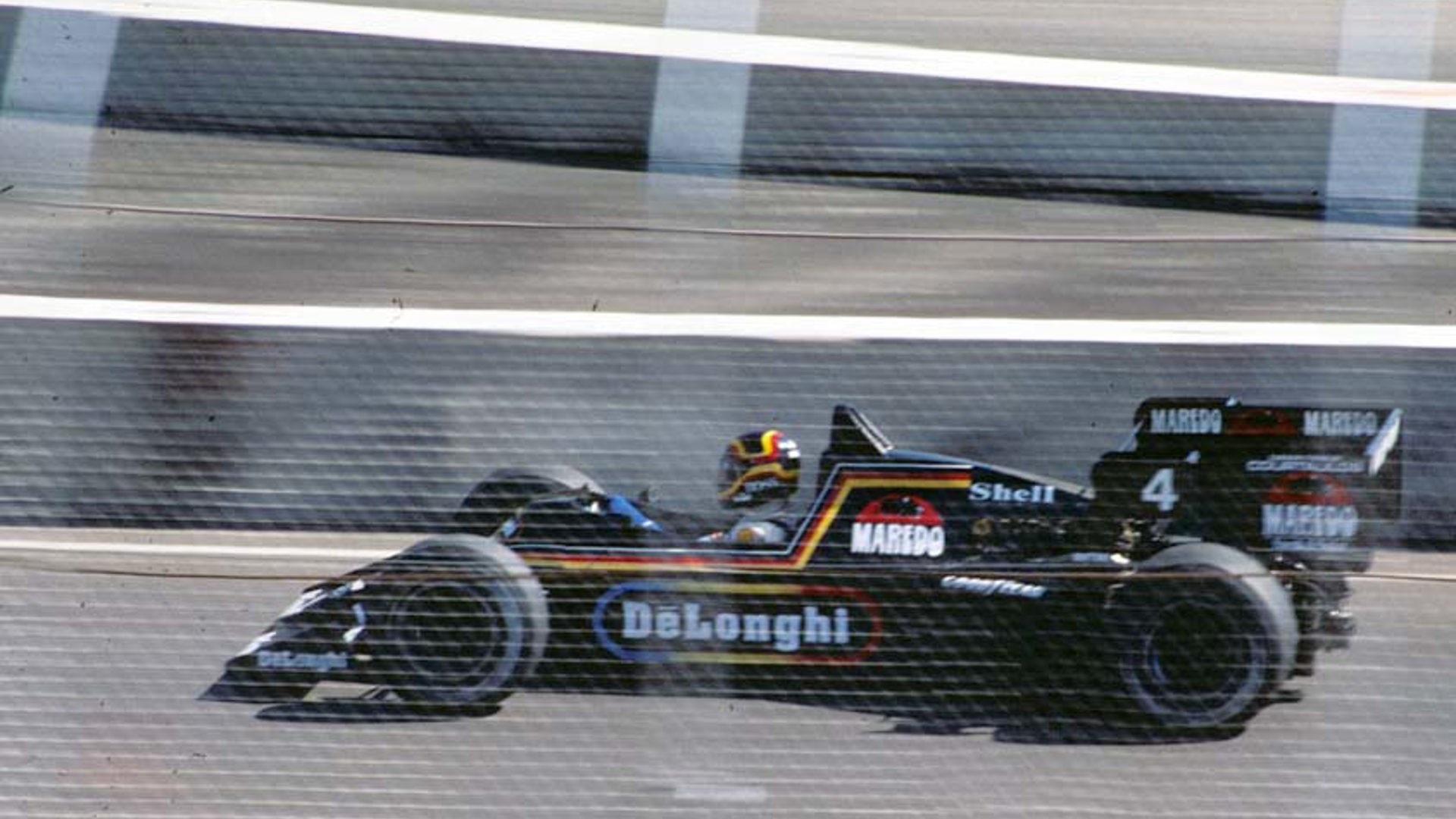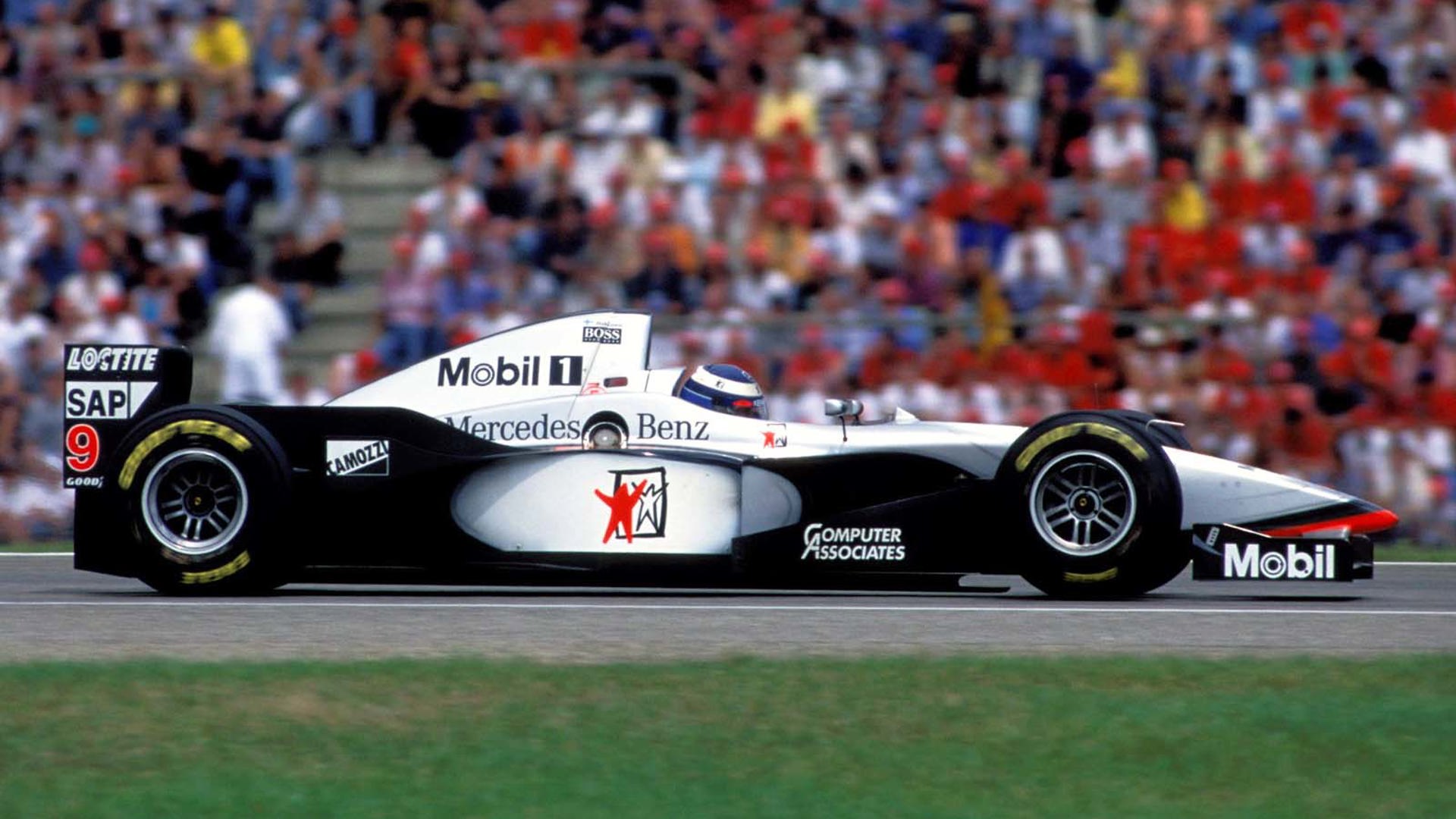'Cheating' is a term that doesn't really apply in racing. Let us explain ourselves before legions of 'sportsmen' kick off lectures on the purity of competition and the unsullied reputations of true champions: each and ever race team pushes as far as it possibly can in terms of interpreting the rules and applying regulations to the cars they put on the track. Ask any racer, any real racer: if you're not cheating, you're falling behind the rest of the pack, because another word for cheating is 'innovation.'
That being said, some cheats are more spectacular / brazen / ingenious than others. Let's take a look at 10 of the greatest motorsports cheats of all-time.
Tyrrell's Lead Shot / Darrell Waltrip's BBs

Weight has traditionally always been the enemy of performance, and race teams have gotten quite creative in how to slip in under the minimum mass required by their respective series. In the mid-80s, F1's Tyrrell Racing was having trouble keeping up with the rest of the pack, which were all using turbochargers - a technology that Tyrrell couldn't afford. Given that the lack of forced induction meant that the team's car was lighter than the series spec, it began to use ballast tanks filled with water…and lead shot. It turned out that by dumping 140 lbs of lead into the tank at the very end of the race, the team could fool officials into thinking the tanks hadn't been bled dry during the event itself, dropping the car underweight. It wasn't until lead shot began to fly out of tank vents that the jig was up.
Darrell Waltrip's NASCAR team took a slightly less stealthy route towards variable mass when it also began to load his stock car with shot - this time using small BBs that would add weight to the car on the pre-race scales but which would escape via a hole in the frame rail once out on the track, scattering behind Waltrip at speed. One day, the BBs got wet - presumably after the car was washed - and instead of dropping gracefully on the back straight they dumped unceremoniously in a clump on pit lane in front of NASCAR stewards. Oops.
McLaren's Extra Brake

In 1997 McLaren's MP4/12 was a brand new weapon being campaign by Mikka Häkkinen and David Coulthard. It was also exceptionally good at going around corners. Maybe a little too good. In fact, it was by design - the MP4/12 had been outfitted with a unique braking system that allowed its pilots to activate just one of its rear discs if they wanted to, in effect smoothing out understeer and improving the car's ability to pivot. It came to light after Darren Heath, an F1 photographer, snapped images of the McLaren's rear brakes glowing red hot despite the fact that the car was in the middle of rocketing forward. The FIA banned the system in 1998.
Michael Schumacher's Launch Control System

Michael Schumacher's first world championship in Formula 1 came in 1994, which was also the same year that his team, Benetton, was implicated in a scandal involving an illegal traction control system installed in the car that he drove. Electronic driver's aides had been taken off the menu for '94, alongside anti-lock brakes, but the Benetton car had aroused suspicion that it might be using a launch control system due to Schumacher's incredibly quick starts and pit lane escapes. The accusations came to a head when the team initially refused to hand over the source code for its engine management system, only doing so after an FIA deadline had already passed. Benetton wasn't alone - Ferrari, McLaren, and Williams were also linked to driver's aides - but officials could only prove that launch control was 'available' in the car, not that Schumacher used it on his way to his first championship.
Smokey Yunick's 11-Foot Fuel Line

Remember what we said in the intro about 'interpretation' of the rules being the backbone of any motorsports cheat worth a spot on this list? NASCAR's Smokey Yunick was by far the master at finding the grey area in the rule book and then exploiting it to the hilt. Perhaps his most famous move was made after he realized that NASCAR officials specified how big a car's fuel tank could be, but made no mention of the fuel line itself. This led to the installation of a fuel line in Yunick's race car that was 11 feet long and two inches thick, making it capable of holding an extra 19 liters of gasoline. Race stewards, suspicious of the setup, had removed the car in question's gas tank for inspection and were shocked when Smokey started the car up and drove it back into the pit.
This was on top of another favorite Yunick trick, which was to inflate a basketball inside the fuel tank and then have NASCAR officials verify that it held exactly the legal amount of gas before a race. Once inspected, Smokey would deflate the basketball, remove it, and fill the extra volume it left behind with fuel.
Tim Flock's Wooden Roll Cage

The root of all genius is madness, or at least so it would seem in the case of NASCAR driver Tim Flock. In an effort to save weight in his stock car in 1952 he was caught by officials with a roll bar made entirely out of wood that had only been painted to look like it was regulation steel. This is far from the most 'out there' aspect of Flock's racing career, for while he had his share of success - winning the Grand National championship in 1952 and 1955 - he also raced for several weeks with a monkey sitting beside him the car. Named 'Jocko Flocko,' its tenure as co-pilot was ended during a tragic accident that saw it struck by a rock on-course (costing Flock the victory).
Toyota's WRC Restrictor Plate Bypass

Max Mosley called it 'beautifully made.' And it was: Toyota's painstakingly-engineered system to bypass the restrictor plates used to keep speeds down during the 1995 season of the World Rally Championship was virtually undetectable by inspectors. A series of perfectly-balanced springs moved the plate in question out of the way while the car was at full throttle, allowing the Toyota Team Europe ST205 Celica to churn out 50 more horsepower than the rest of the pack (which were capped at 300 horses). While at rest, it took special tools to even budge the plate, and disassembling the turbo revealed almost no evidence of tomfoolery. Once caught, the FIA banned Toyota for the rest of the season and in fact the two seasons after that, preventing factory-backed Celicas from taking the WRC grid until 1998.
Roger Penske's Acid-Dipped Camaro

How many times have cheaters tried to weasel their way around weight restrictions? Too many to count - but not all of them were as creative as Roger Penske and Mark Donohue during the 1967 SCCA Trans-Am campaign. The pair hit up Lockheed Aerospace with their Chevrolet Camaro in order to have it dipped in acid, a process that dropped almost 400 lbs from its curb weight and made its structure so flimsy that a roll cage of epic proportions had to be installed as a secondary frame. SCCA stewards were not amused, eventually banning the ultra-light Camaro, but that didn't deter Penske or Donohue who simply engaged inspectors in a game of cat and mouse by entering the car alongside another, 'legal' Chevrolet at future races and moving numbers, markings, and other identifying features back and forth between the two coupes.
Gordon Murray's Adjustable Ride Height F1 Car

The amount of air passing underneath a car is at least as important as how air flows over the top of it when it comes to designing a competitive aerodynamic package. This is why each racing series institutes a minimum ride height. Of course, the only way to measure how high a given race car is off the ground is to wait until it comes to a complete stop, which is why Gordon Murray designed a Formula 1 car for Brabham in 1981 that used air pressure to drop it below the six centimeter limit on the course. Once back in the pits, the car's shock absorbers used a hydraulic reservoir to push back up to spec. Murray also employed a bit of a red herring to confuse competitors and keep them from copying his innovative scheme by installing a metal box complete with wire leads at a random spot on the chassis that he knew would draw attention away from what was actually happening with the vehicle.
Ken Schrader's Seattle Smokescreen

Sometimes cheating means thinking on your feet, especially if you're protecting a win. When NASCAR's Ken Schrader was competing in a short track event in Seattle, he realized that he didn't have enough tire to last the 10 laps that stood between him and the checkered flag after a restart bunched up the field. Six laps later, after the second place car had almost caught him, he decided to 'simulate' an engine failure by grabbing his in-car fire extinguisher, pointing it out the window, and pulling the pin. Thinking the smoke was a sign his motor was about to blow, his competitors backed off just enough to let him hold on to the win.
Smokey Yunick's Trick Chevelle

It's only right that Smokey Yunick should appear on this list of the greatest motorsports cheats of all time twice, given how prolific he was at bending the rules. There's long been an urban legend told around the paddock of how Yunick built a 7/8ths edition of Curtis Tuner's Chevelle stock car in 1966, shedding pounds without catching the ire of officials, but the truth is somewhat more nuanced than that. Yunick actually moved the body of the vehicle back on the chassis in order to improve weight balance and aerodynamics, and he also raised the floor and smoothed it out to further enhance air flow. Even the roof and glass openings on the car had been reconfigured in order to slip down the track with as little drag as possible. NASCAR figured out Smokey's shenanigans and instituted the use of templates that had to fit perfectly over each vehicle during inspection to make sure that its profile hadn't been taken too far out of spec.












